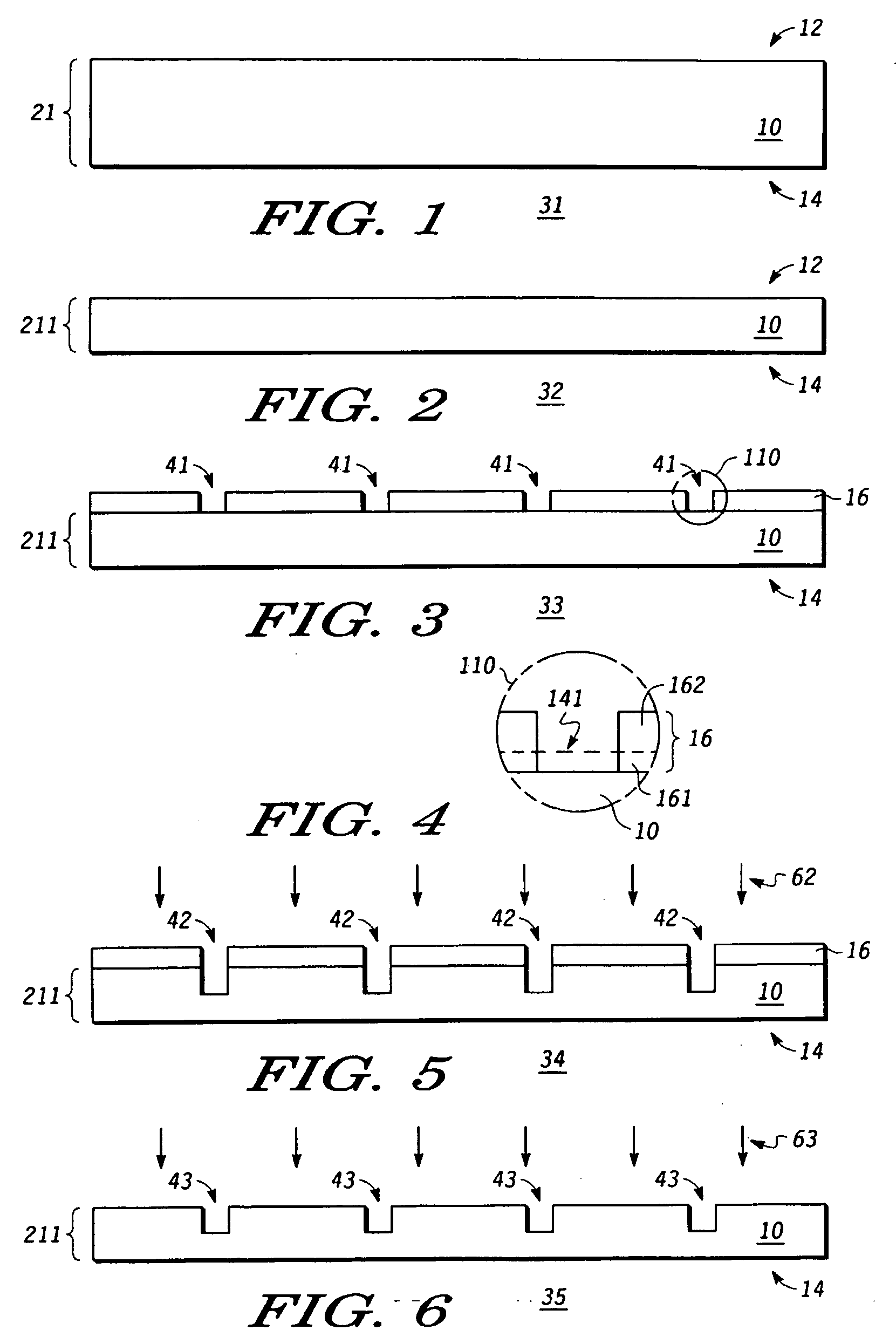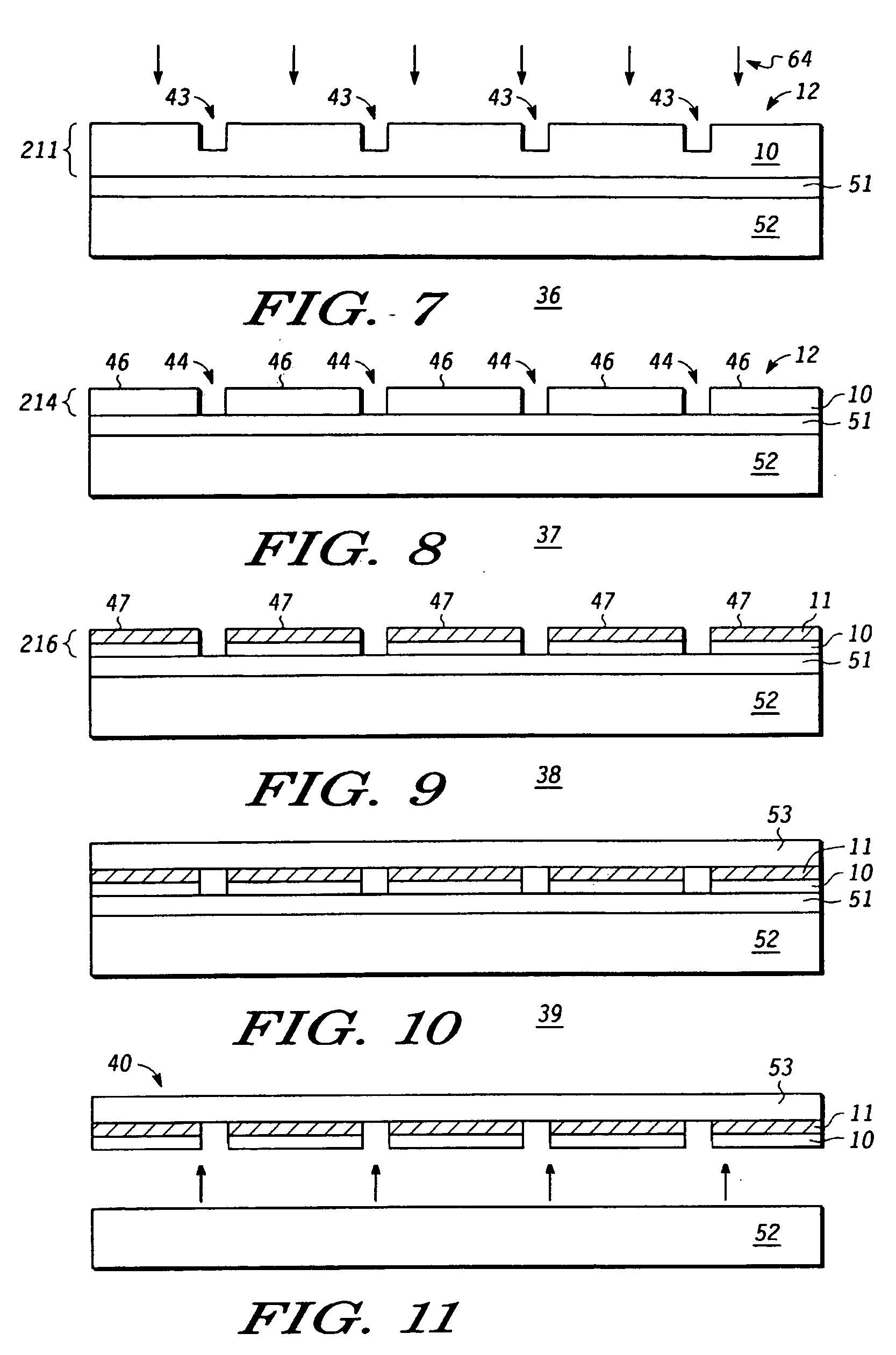Ultra-thin die and method of fabricating same
a technology of ultra-thin dies and dies, applied in the field of ultra-thin dies, can solve the problems of only being able to accommodate die thinning only so much, and the likelihood of further damage to the di
- Summary
- Abstract
- Description
- Claims
- Application Information
AI Technical Summary
Problems solved by technology
Method used
Image
Examples
Embodiment Construction
)
[0009] In accordance with a specific embodiment of the present disclosure, a method of processing a semiconductor substrate is disclosed whereby the substrate is both thinned and diced (singulated) during a common process. In one embodiment, a mask layer, such as a photoresist or other patternable organic layer having open trench regions, is formed on the backside of the substrate using standard lithography coupled with backside alignment techniques. The trench regions are typically aligned to scribe grid regions defined on the frontside of the substrate. An anisotropic etch applied to the backside results in a pattern transfer of the trench regions onto the backside of the substrate. After the mask layer is removed, either by etch consumption or stripping, etch of the backside of the substrate is performed to thin the wafer evenly over the backside surface. The trench areas, which constitute the deepest portion of the backside are etched simultaneously and remain the deepest porti...
PUM
 Login to view more
Login to view more Abstract
Description
Claims
Application Information
 Login to view more
Login to view more - R&D Engineer
- R&D Manager
- IP Professional
- Industry Leading Data Capabilities
- Powerful AI technology
- Patent DNA Extraction
Browse by: Latest US Patents, China's latest patents, Technical Efficacy Thesaurus, Application Domain, Technology Topic.
© 2024 PatSnap. All rights reserved.Legal|Privacy policy|Modern Slavery Act Transparency Statement|Sitemap



